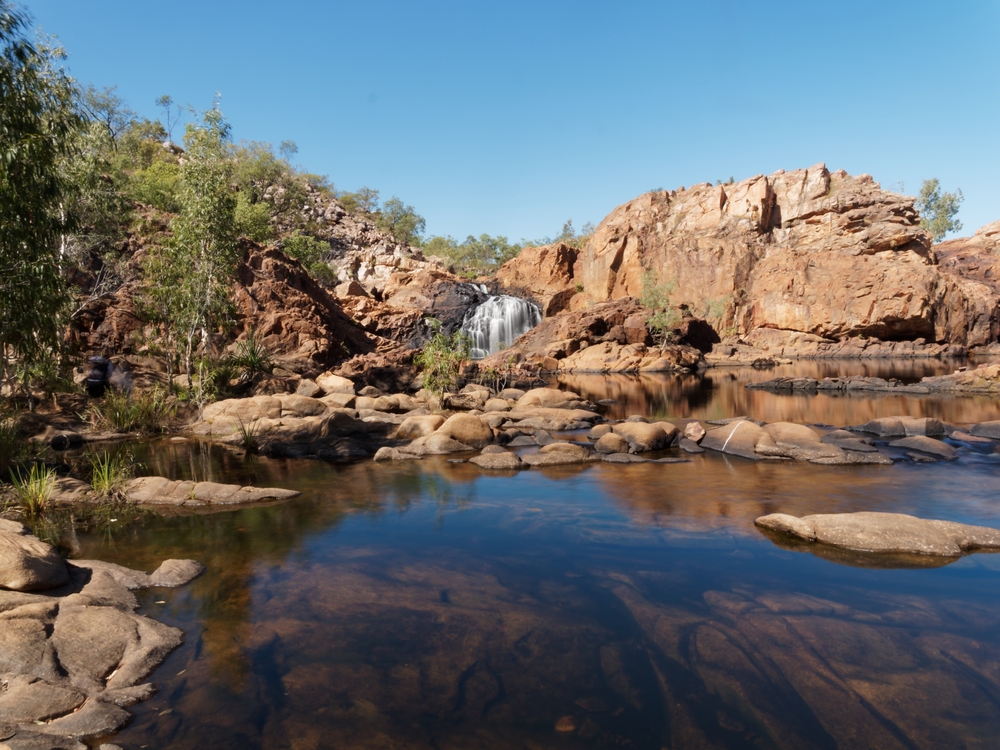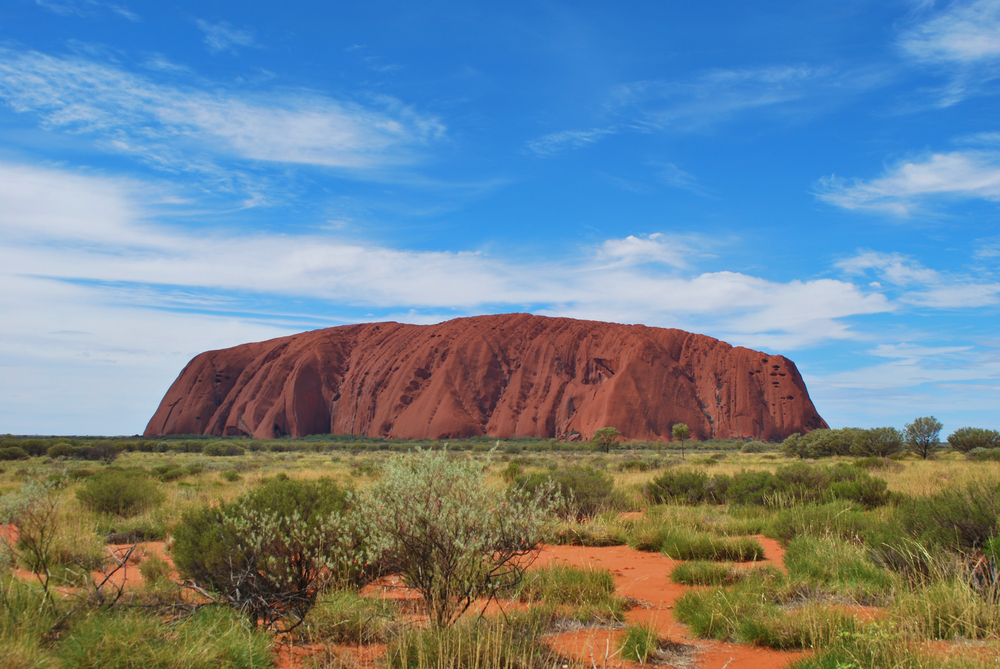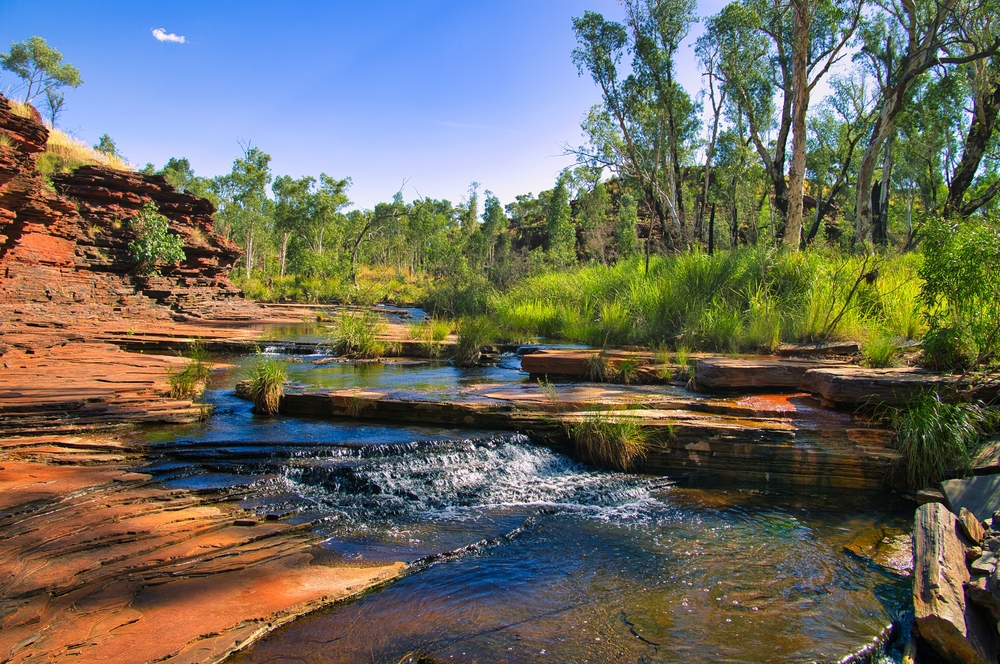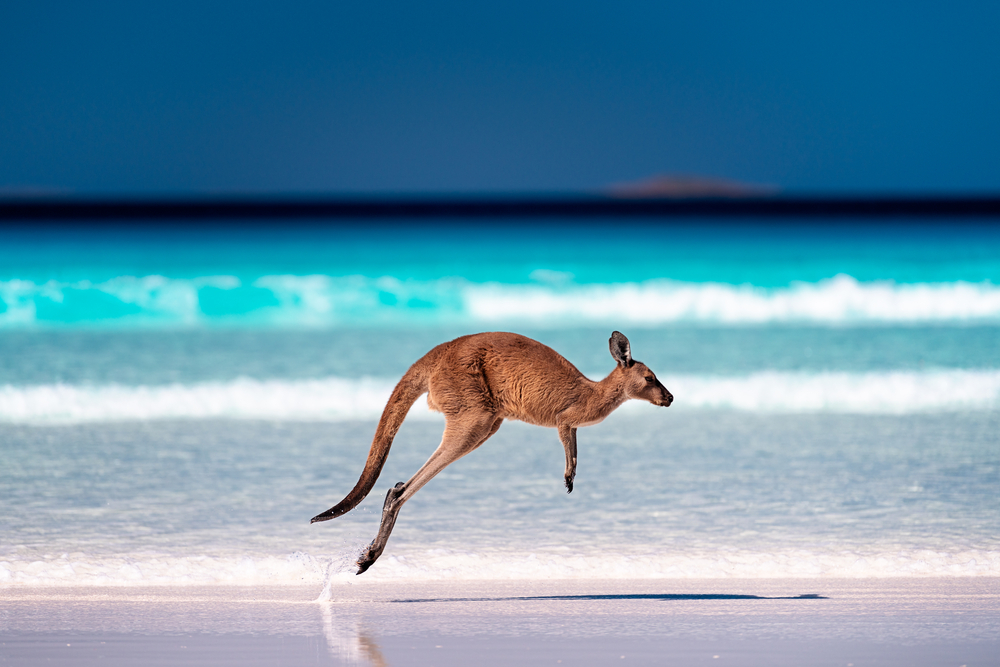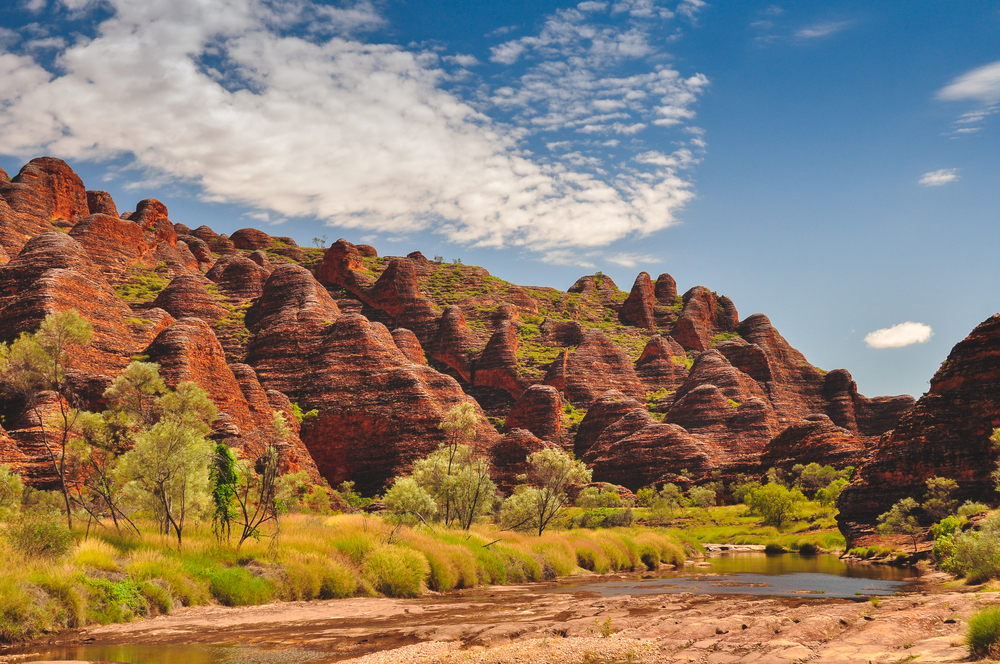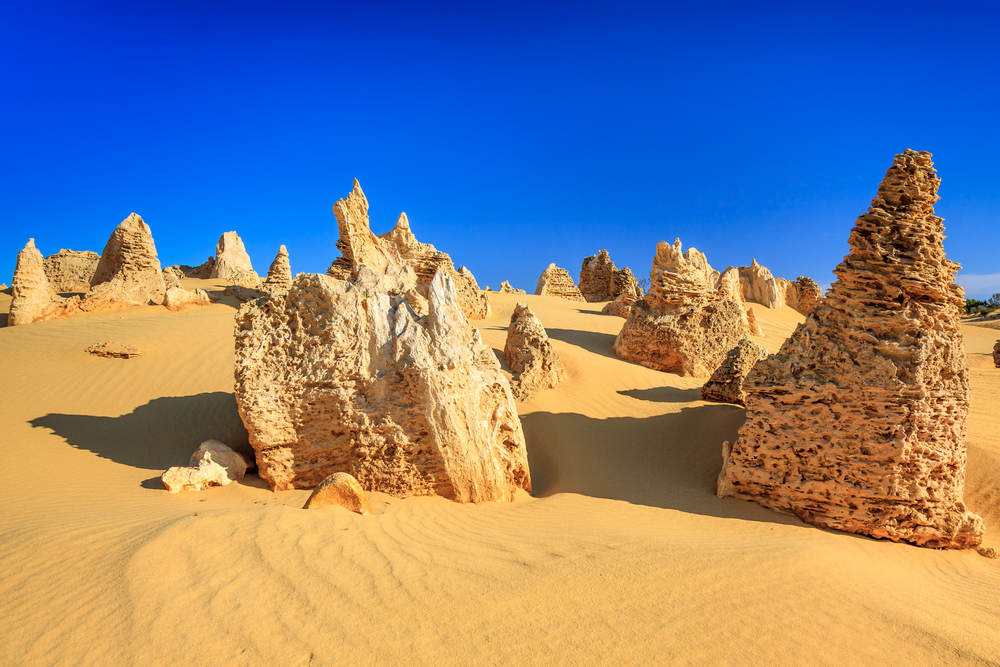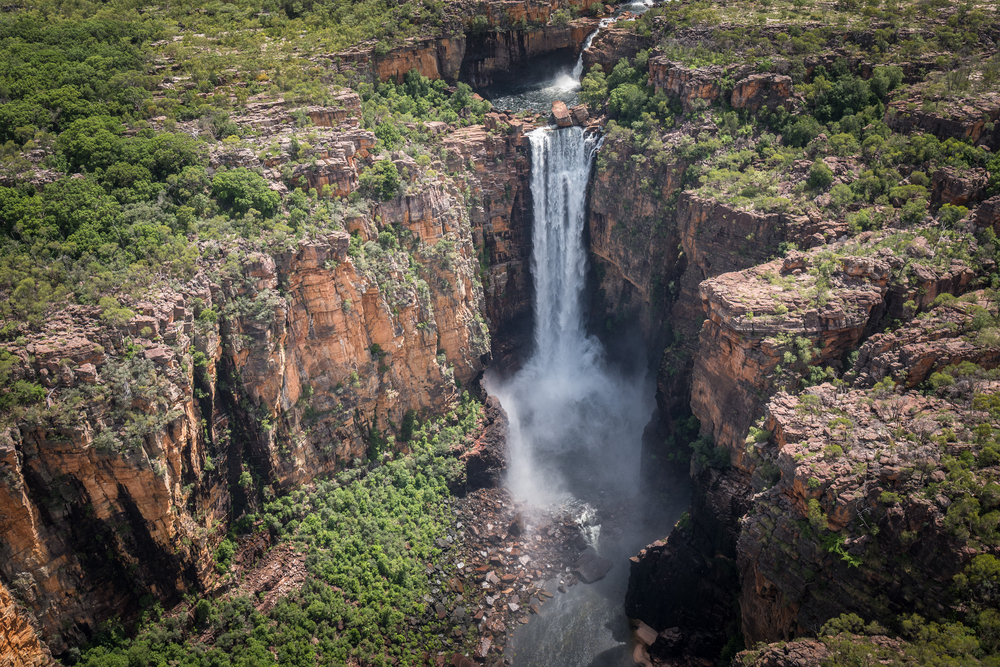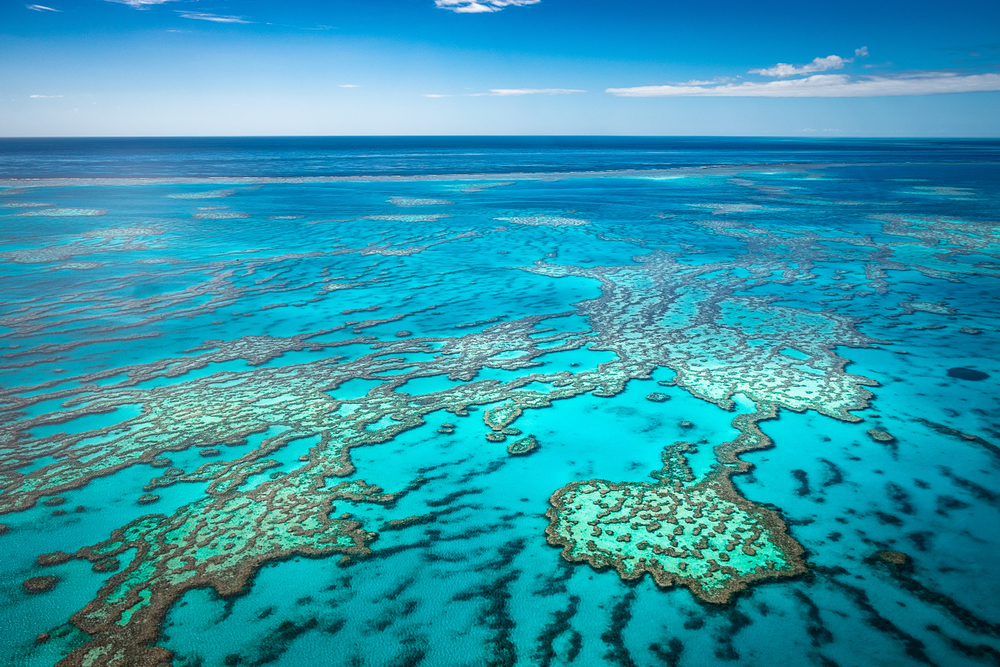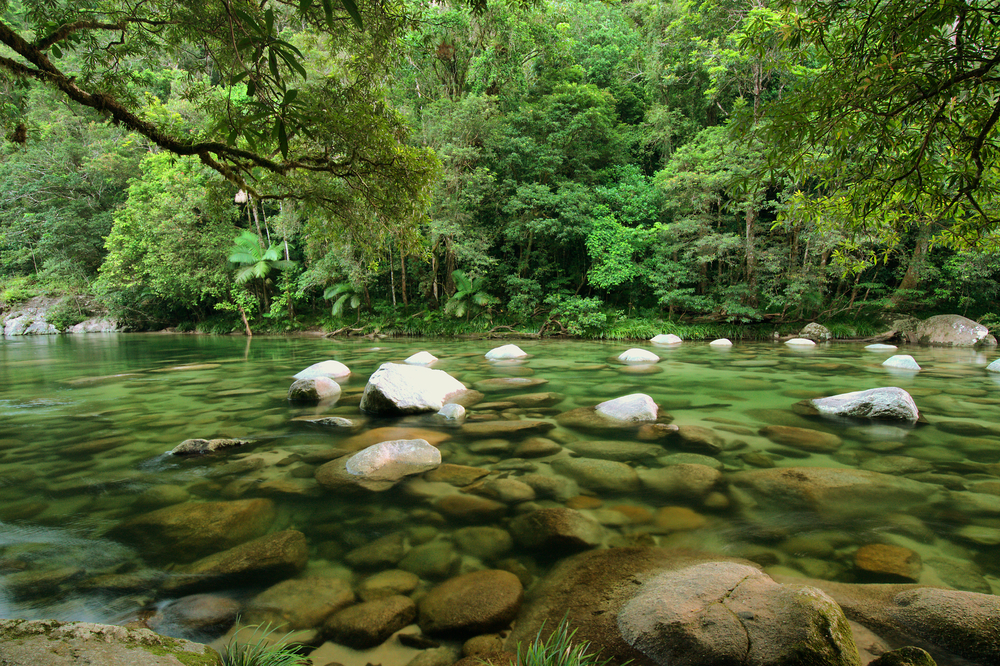Nitmiluk Overview
Nitmiluk National Park, known as “Cicada Place” in the local Jawoyn language, is a breathtaking natural reserve in Australia’s Northern Territory.
Spanning approximately 1,980 square miles (5,100 square kilometers), it lies near the town of Katherine, about 190 miles (300 kilometers) south of Darwin. The park is best known for Nitmiluk Gorge, a series of 13 deep sandstone gorges carved by the Katherine River over millions of years.
Towering escarpments, lush riverbanks, and rocky plateaus define the landscape, while waterfalls such as Edith Falls cascade into refreshing pools. The park’s terrain varies from rugged sandstone formations to monsoon forests, creating a diverse and visually striking environment.
Wildlife thrives throughout the park, offering visitors a chance to encounter an array of unique Australian species. Agile wallabies and short-eared rock wallabies are commonly seen bounding through the rocky outcrops, while freshwater crocodiles bask on the riverbanks.
The park is also home to over 200 species of birds, including the striking red-winged parrot, the rare Gouldian finch, and the majestic white-bellied sea eagle. Reptiles such as the frill-necked lizard and the olive python add to the park’s diverse ecosystem, making it a haven for nature enthusiasts and wildlife lovers.
Among the park’s most popular features, Nitmiluk Gorge stands out as the primary attraction, drawing visitors with its dramatic cliffs and winding river channels. Canoeing through the gorge offers an immersive experience, allowing travelers to navigate the waterways at their own pace. Boat cruises provide a more relaxed way to appreciate the towering sandstone walls and ancient rock art sites that tell the stories of the Jawoyn people.
For those who prefer land-based exploration, an extensive network of hiking trails ranges from short walks to multi-day treks, such as the Jatbula Trail, a 38-mile (62-kilometer) route leading past waterfalls, plunge pools, and Aboriginal rock art. Swimming at Edith Falls is another favorite activity, where clear waters provide a refreshing escape from the heat.
Visitors engage with the park through a variety of outdoor adventures, whether hiking through rugged terrain, paddling along the river, or camping beneath the star-filled sky. Guided cultural tours led by Jawoyn traditional owners offer a deeper understanding of the park’s significance, sharing Dreamtime stories and showcasing ancient rock art that has endured for thousands of years.
Helicopter flights provide a bird’s-eye view of the gorges, revealing their full scale and beauty in a way that ground-level exploration cannot match. During the wet season, dramatic waterfalls become even more impressive, drawing photographers and nature lovers alike.
Conservation efforts in Nitmiluk National Park have been a success, largely due to the co-management between the Jawoyn people and the Northern Territory Government. This partnership ensures the protection of both the park’s natural and cultural heritage while promoting sustainable tourism. Fire management strategies help maintain the health of the landscape, while strict regulations protect native species from human impact.
Ongoing efforts to preserve the rich Aboriginal rock art and cultural sites are vital to maintaining the deep spiritual connection between the land and its traditional owners. The balance between ecological preservation and visitor access remains a priority, ensuring that Nitmiluk continues to be a treasured natural and cultural sanctuary for generations to come.








































































